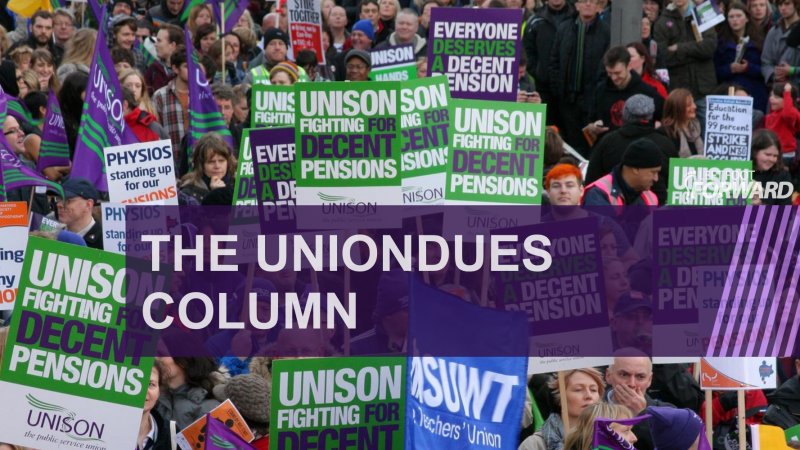The latest UnionDues podcast goes behind the headlines of the 2020 General Strike in India. Some of the issues are familiar to the UK...

Simon Sapper is a trade unionist and host of the UnionDues podcast. The new episode goes live at midday on Tuesday.
At the end of 2020, a coalition of Indian trade unions mobilised 250 million workers to take action in support of a programme including emergency food and financial assistance, employment support, universal provision of pensions and an end to privatisation.
Let’s start with a necessary caveat – the Indian trade union movement, like the country itself, is complex and multi-faceted, with as many views as there are stakeholders. But Ajitesh Pandey gives us an unrivalled insight into the dispute, it’s causes and context, from the perspective of the 40m-strong INTUC, the largest of the country’s ten union centres. Ajitesh himself is a lawyer by profession and serves as the President of INTUC’s youth section in West Bengal and is also Joint General Secretary of the national youth section.
To give some context, West Bengal is home to an estimated 100m people, 45% of whom are under 20 years old. The main city is Kolkata (population nearly 15m), and the area covered is 90 million km2. Or put another way, there’s one-and-a-half times the UK’s population in an area a third of the UK’s size.
The impact of the Modi administration on employment rights and working conditions is a constant theme in our conversation as is the relevance of class to union structures.
As Ajitesh explains, most Indian union centres have party political links – INTUC to Congress, BMS to the ruling BJP, and more left wing centres to Marxist, Communist or Socialist-orientated parties. The rivalry is such that the government has refused to ratify the latest INTUC membership figures for fear, according to Ajitesh, that they will show a widening gap with BMS.
The 2020 strike can be traced back to a gathering of the ten trade union centres in 2011. They agreed a 12-point charter and created a national co-ordinating group to move things forward. Some of those points became the main causes of the phenomenal turnout nearly ten years later.
The Indian Labour Conference is an annual tri-partite gathering to ensure that there is at least clarity on the respective positions of unions, business and government, and hopefully some agreement too. But the ILC has been suspended since 2015, a further factor in the 2020 mobilisation.
When you add to the mix the right-wing government’s refusal to move on minimum wage rates, and statutory holiday entitlement, and a legislative programme to rationalise 44 labour-related laws into 4 new acts, it becomes clear why Ajitesh and INTUC describe the new laws as a ‘charter for fire and rehire’, as well as an existential threat to grass-roots union structures.
There is absolutely no love lost between INTUC and the BJP party, with the latter’s success being attributed ‘to Mr Modi’s charisma and the politics of religious polarisation and strident nationalism’.
We also chat about the epic ‘long march’ from Chittaranjan to Kolkata, covering 300km in 12 days, with the crowd growing into hundreds of thousands as they went. The campaign was led by farmers, battling to prevent privatisation of the markets where they sell their products. And we discuss the importance of the then-current West Bengal state elections, alongside the INTUC approach to recruiting, organising and developing young members.
This is a very different world to the one UK unions live in, but it is not totally divorced. International supply chains and UK-India family links mean that the two economies are connected. An uneven playing field, enthusiastic privatisation and deregulation, and one-sided flexibility in working arrangements are disturbingly familiar common pictures.
Mel Simms’ #thought4theweek looks at trade union mobilisation and organising. Is there a difference and what makes one approach more effective than the other. If you thought they were just different words for the same thing, this will make you think again.
And of course, Josiah Mortimer gives us an exclusive preview of this week’s #RadicalRoundUp
Access this and all episodes here.
Left Foot Forward doesn't have the backing of big business or billionaires. We rely on the kind and generous support of ordinary people like you.
You can support hard-hitting journalism that holds the right to account, provides a forum for debate among progressives, and covers the stories the rest of the media ignore. Donate today.



